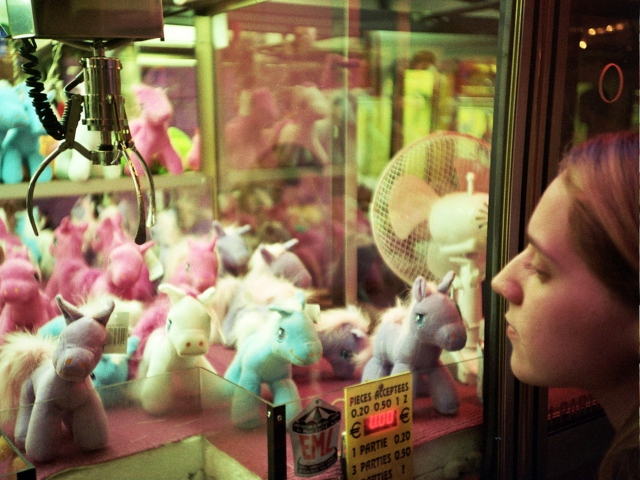
-
It’s Official, Most Of Those Claw Machine Arcade Games In SA Are Rigged
09 Feb 2023 by Tayla in Advertising, Business, Lifestyle, Money, South Africa
[imagesource: Wikimedia Commons]
I remember quite clearly staring at an older girl beating the claw machine outside our local mall in Benoni and thinking wow, she has such skill, I hope to be just like her someday.
She won two fluffy dog bags and gave me one, which was pretty cool of her.
But it turns out, her “skill” might have been down to pure luck, as well as enough money paid into the machine during previous tries to allow an eventual win.
Business Insider has revealed that winning has almost nothing to do with how the toys are stacked, whether they’re easy to grab, or whether the claw-to-toy alignment is perfect.
Rather, it has everything to do with how the machines are built and rigged from the get-go.
Since their inception in the 1920s, claw machines have been mass-marketed as a game of good skill and strategy, which will allow you a fair opportunity to win a prize on every turn.
But in actual fact, claw machine owners almost always set parameters to ensure you only get a prize once the game has collected a stipulated profit:
…And given the state of disrepair of some machines in South Africa, some of which are about 30 years old, you’ll be lucky if you enter into the realm of possibly winning a prize with many of them.
While the US and Canada call them gambling machines and have been attempting to make them more a game of skill than chance through various regulations, South African machines make bank for the owners at the expense of the duped players:
Local legislation permitted 50,000 of these slot machines outside of casinos in South Africa –because they cost a maximum of R5 per turn and pay out maximum winnings of R500.
Of the claw machines checked by Business Insider South Africa, all cost between R6 and R12 per turn – well above that of the limited payout machines.
Many local machines are open to manipulation so as to be all about profit-making:
One you will find in shopping mall arcades is the Maxi Claw. Business Insider SA played multiple turns on these machines and not once did the claw clamp hard enough to move one of the toys.
…Most claw machines in South Africa’s most extensive arcade network come from Chinese company ELAUT, often under the brand name Mega Crane and Candy Man. These date back to the 90s and run on a circuit board called Eurograb, which some have described as easily rigged.
What’s more, the manuals on these machines openly refer to how you can rig the system, making winning impossible or unlikely while allowing players to think they are doing a good job and should keep going:
An internal document from ELAUT for its Intelligrab operating system is unsubtle about its abilities. The document says players “must fall under the spell of the game” and make them appear as a game of skill.
“He must have the feeling that he controls the game, that the machine does what he wants and that the grab can pick up the merchandise easily, but that he played not accurate enough and wants to try again,” the document states.
Yikes.
You might have figured it out already.
Paying R100 – R200 rand to (not) win a low-grade, cheap toy is simply never worth it.
[imagesource:businessinsider]
Latest News
-
Game, Seth, Match – Goodbye 2024
Hey Guys - thought I’d just give a quick reach-around and say a big thank you to our rea...
-
Breakfast Of Champions: Hollywoodbets Kenilworth Racecourse Breakfast Gallops Is Back!
[imagesource:CapeRacing] For a unique breakfast experience combining the thrill of hors...
-
Need NYE Plans? Cafe Caprice’s Night Of Enchantment Masquerade Party Could Do The Trick
[imagesource:howler] If you're still stumped about what to do to ring in the new year -...
-
Buckingham Palace Steps In After Staff Christmas Party Spirals Out Of Control
[imagesource:maxandeli/facebook] It's not just in corporate that staff parties get a li...
-
Designer Babies Are Running Into Trouble As Teens, Grappling With Being ‘Experiments’
[imagesource:here] Imagine being born with the weight of your parents’ version of per...
-






























